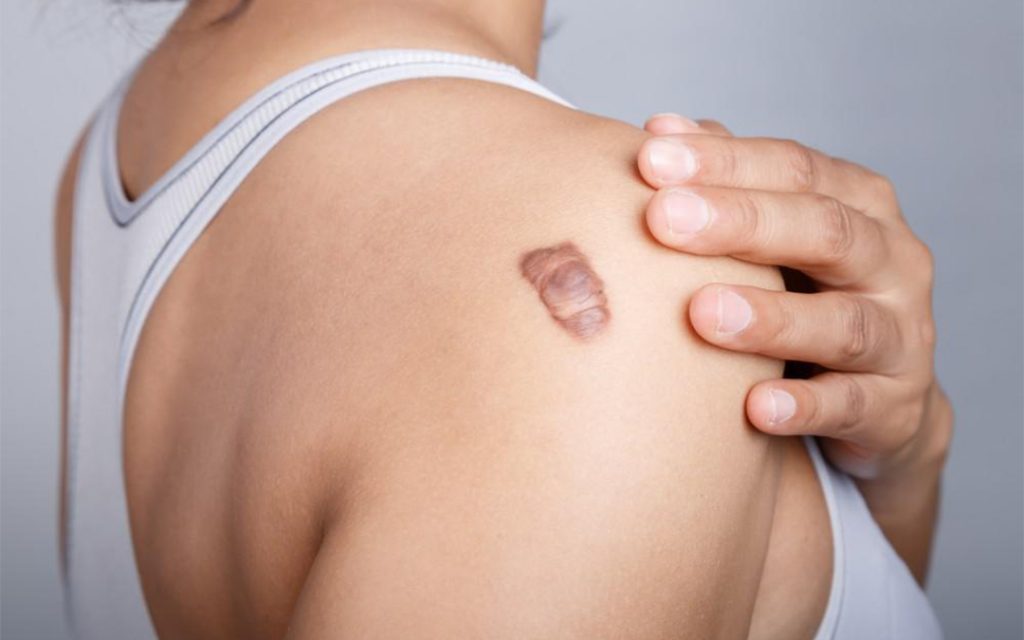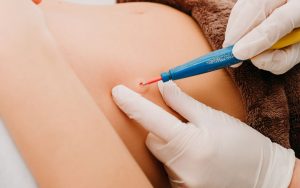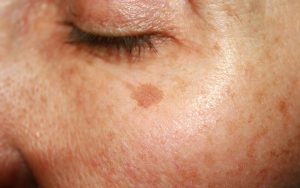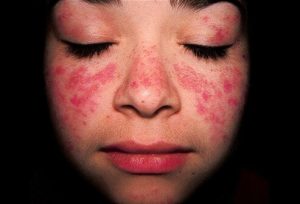Scars are part of the skin’s natural healing process, but that doesn’t mean we have to live with them forever. Whether caused by acne, surgery, pregnancy, or injury, scars come in many forms, and so should the way we treat them. What works for one type of scar might do little for another. That’s why understanding your scar type, and your skin tone, is key to finding the treatment that works best for you.
Different Types of Scars
Acne Scars
These usually show up as pits, depressions, or discoloured marks after breakouts have healed. Some are shallow and fade with time, while others, like ice pick or boxcar scars, are deeper and more stubborn.
What can help:
- Laser treatments (like fractional laser or BBL)
- Microneedling
- Chemical peels
- Fillers for deep indentations
Hypertrophic Scars
These are raised, firm scars that form where the skin was injured. Unlike keloids, hypertrophic scars don’t grow beyond the boundary of the original wound. They often appear red or pink and may flatten over time, but can still be itchy or uncomfortable.
What can help:
- Steroid injections
- Laser therapy to reduce thickness and redness
- Silicone gel sheets or creams
Keloids
These are more aggressive than hypertrophic scars and tend to grow beyond the original wound. They’re common among people with darker skin tones and can appear shiny, raised, and often feel firm to the touch.
What can help:
- Corticosteroid injections
- Cryotherapy (freezing) for smaller keloids
- Laser treatment to reduce redness and flatten the scar
- Pressure therapy or silicone dressings
Surgical Scars
Scars from surgery vary depending on the location, skin type, and how the wound healed. Some may fade naturally, while others become thick or pigmented.
What can help:
- Topical treatments to reduce pigmentation
- Laser resurfacing for texture improvement
- Scar revision procedures for more visible scars
Stretch Marks
While not technically scars, stretch marks are a type of dermal tearing. They often appear during pregnancy, puberty, or weight fluctuations and may be red, purple, or silvery white.
What can help:
- Microneedling
- Laser therapy to improve colour and texture
- Retinoid creams (not suitable during pregnancy)
Why Skin Tone Matters
Treating scars on darker skin tones requires a different approach. Some treatments that work well on fair skin, like strong lasers or aggressive peels, can cause unwanted pigmentation or worsen the scar.
That’s why a tailored plan from a qualified dermatologist is so important. They’ll consider both your scar type and your skin tone before recommending a safe, effective approach.
One Size Doesn’t Fit All
Scar treatments work best when they’re personalised. A treatment that helps reduce acne scarring might not be right for a keloid. And what works on your friend’s stretch marks may not work for yours, especially if your skin types are different.
Need Help Choosing the Right Treatment?
If you’re unsure where to start, let a professional guide you.
At Joyce Lim Skin & Laser Clinic, we offer scar treatments tailored to your skin type and scar concern. Dr Joyce Lim has experience treating different scar types in both lighter and darker skin tones.
Book a consultation today to explore safe and effective options for smoother and even-looking skin. Let us help you find a treatment plan that fits you.











